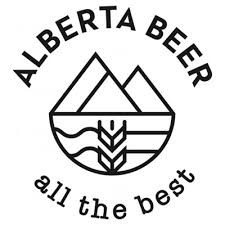A few weeks ago we were on our way to a socially-distanced visit in a friend’s backyard and my spouse needed some wine. So I dropped into a strip mall mom-and-pop liquor store on the way to pick up whatever we could find. I poked my head into the beer cooler and was stunned to find multiple shelves of Alberta craft beer sitting alongside the cases of Lucky, Coors Light and AGD. I was a bit gobsmacked.
It sparked me to do a bit of research on the state of beer in small, individually-owned liquor stores. These stores are notorious for restricting their selections to only that which moves quickly or appeals to the low-cost consumer. They are, in many ways, the worst of liquor retail privatization – lack of selection, zero customer service, lousy ambiance and poorly paid staff. (In another post I will discuss the scourge of mega-chain retailers.)
Generally I don’t spend a lot of time in liquor stores (especially these days). When I need commercial beer I go nowhere other than Sherbrooke Liquor or Keg and Cork (or breweries themselves) because there is no reason to go anywhere else. However, if we need a bottle of wine or some spirits I will pop in somewhere convenient.
In a safe manner I made a point of dropping in on a dozen or so of these small, strip-mall stores (always masked and properly sanitized and no touching product). Because I didn’t want to linger I didn’t take an inventory or write up notes, so this is more impressionistic that I would prefer.
But the conclusion is clear: Alberta craft beer has taken over the mom-and-pop-shop. In every store I went into (including some in less affluent neighbourhoods), there was a section of the beer space devoted to Alberta craft beer. And I don’t mean some token Trad and Grasshopper and the stuff owned by the big boys. Real Alberta craft breweries (I am not saying Big Rock isn’t real – it is just their product has long been widely available).
Often it was just two or three breweries, but sometimes six or seven. Two or three brands from each brewery – usually their more accessible offerings. Some breweries appeared more than others, usually those more established. There was also an Edmonton bias, but that makes sense given I was in Edmonton. I suspect Calgary will be the reverse.

This finding is significant. Five years ago, there was no way these breweries would be found in these stores. You might find a few SKUs of relatively inexpensive B.C. or Ontario craft and a couple well-known American brands. But aside from Big Rock, you would be hard pressed to find significant Alberta content.
This is a sea change (and, yes, I found some of them, too), and its importance should not be understated. These small stores, working with tight margins, are understandably the most pragmatic retailers. Will it sell in sufficient quantities to be worth my while? That is why they sell so much Lucky, Bud, Canadian and other big brands. That they carry Alberta craft is a statement that local craft has arrived. These small businesspeople recognize they have to carry at least some local product to keep their client base happy. That is a monumental shift in consumer demand pressure.
I know the overall industry needle is moving slowly – I continue to doubt that Alberta craft has moved out of single digits in market share – but it is moving. The embrace of local is growing, of that there is no doubt. Small mom-and-pop liquor stores are a beacon of what is coming.
Neighbourhood pubs, not yet embracing local in large numbers, are the next to shift. It has started to happen and I predict it will pick up pace in the next two to three years. The last bastions will be the chain bars with their lucrative exclusivity contracts.
The age of local craft beer is nigh. Let us rejoice.

